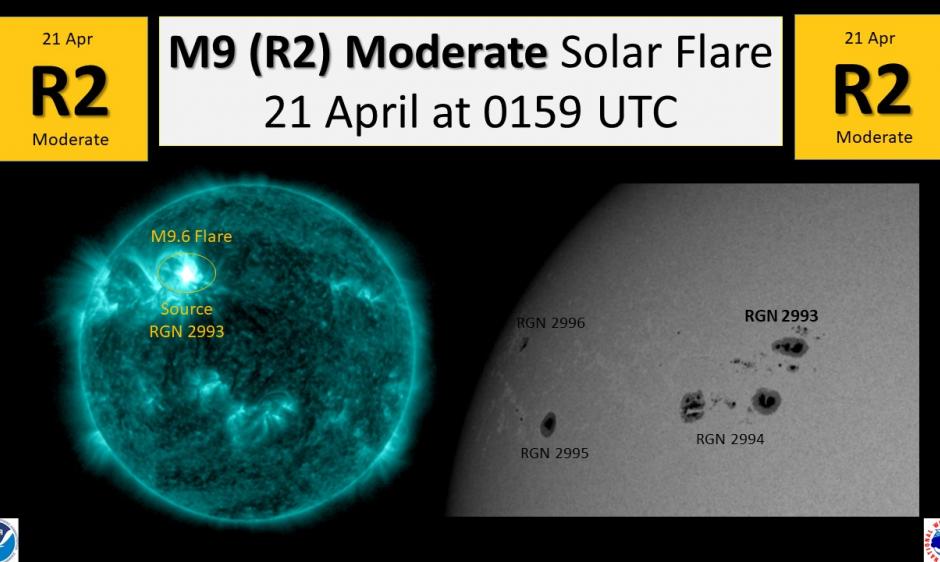
Region 2993 produced an M9.6 flare (R2-Moderate Radio Blackout) at 9:59 pm EDT (21/0159 UTC). Region 2993 is one of two moderately complex sunspot groups currently present on the northeast quadrant of the Sun - the other being Region 2994. The moderate level flare was associated with multiple bursts on specific radio frequencies to include a one of 370 solar flux units on 2695 MHz. Additionally, Type II and IV radio sweeps were detected by the USAF Radio Solar Telescope Network (RSTN), with an estimated velocity of 1132 km/s. These radio signatures are often indicative of a potential coronal mass ejection (CME). The most recent imagery from the NASA/SOHO LASCO instrument confirms a CME took place. SWPC forecasters are currently analyzing the CME to determine the likelihood of any Earth-directed component.